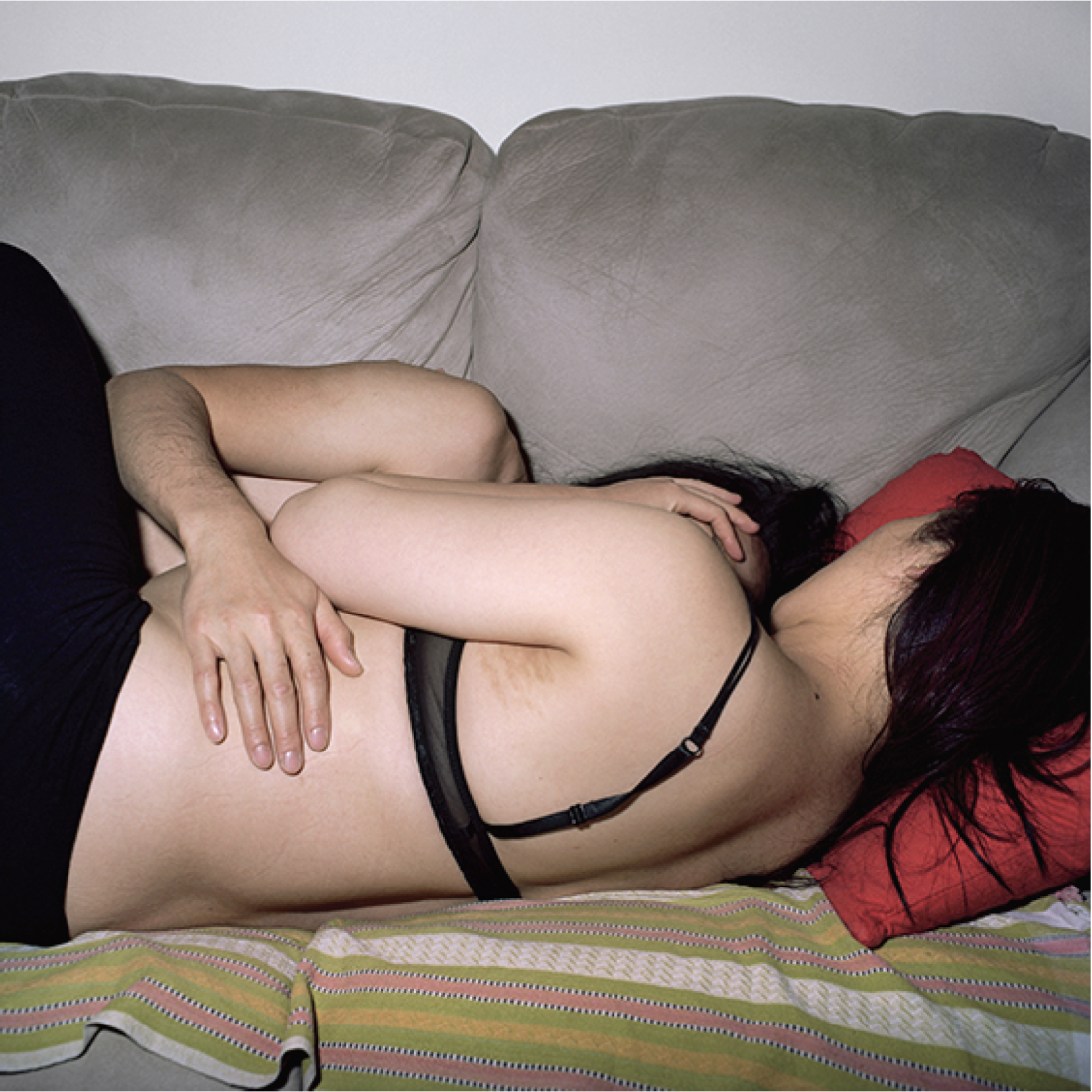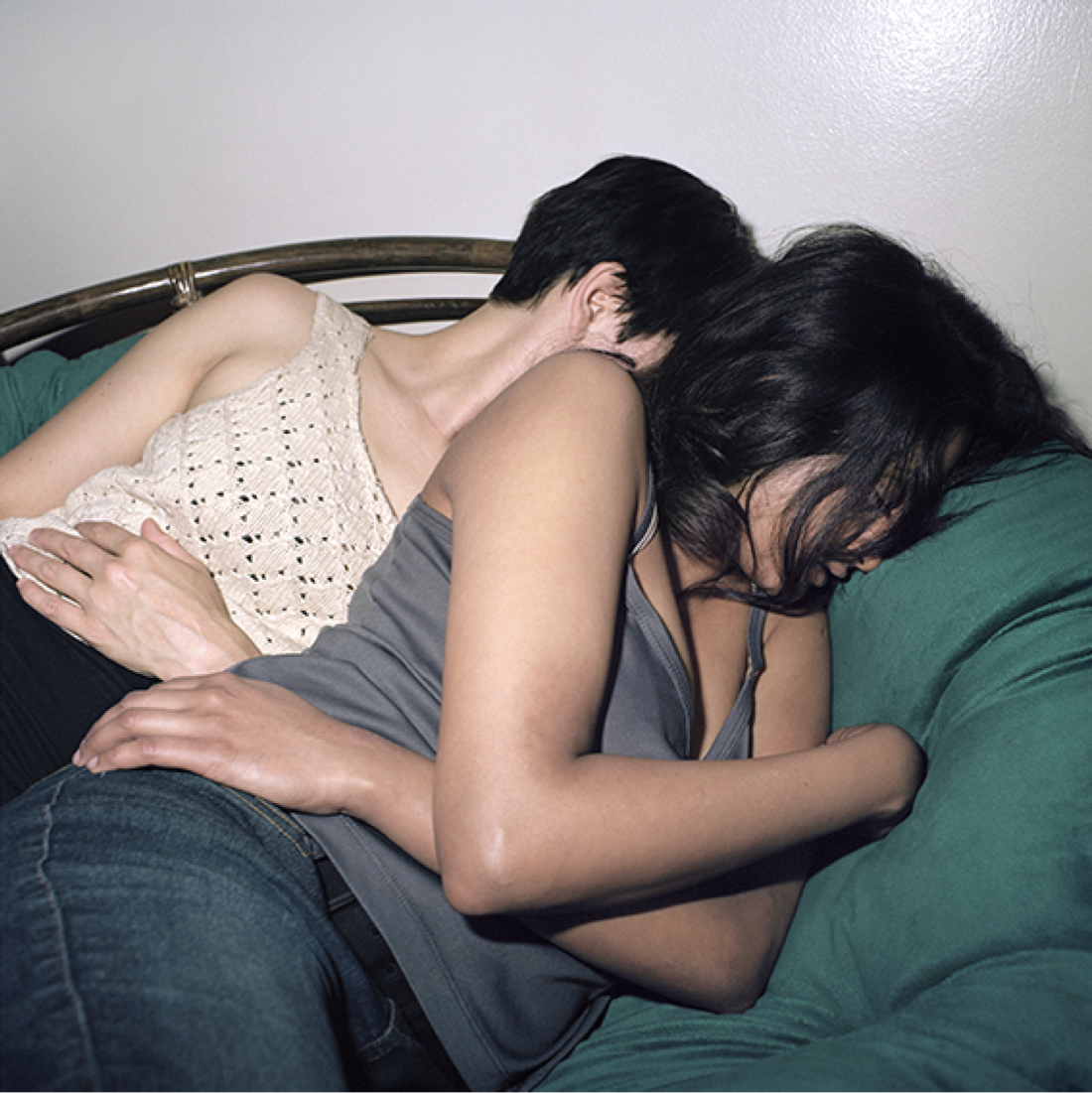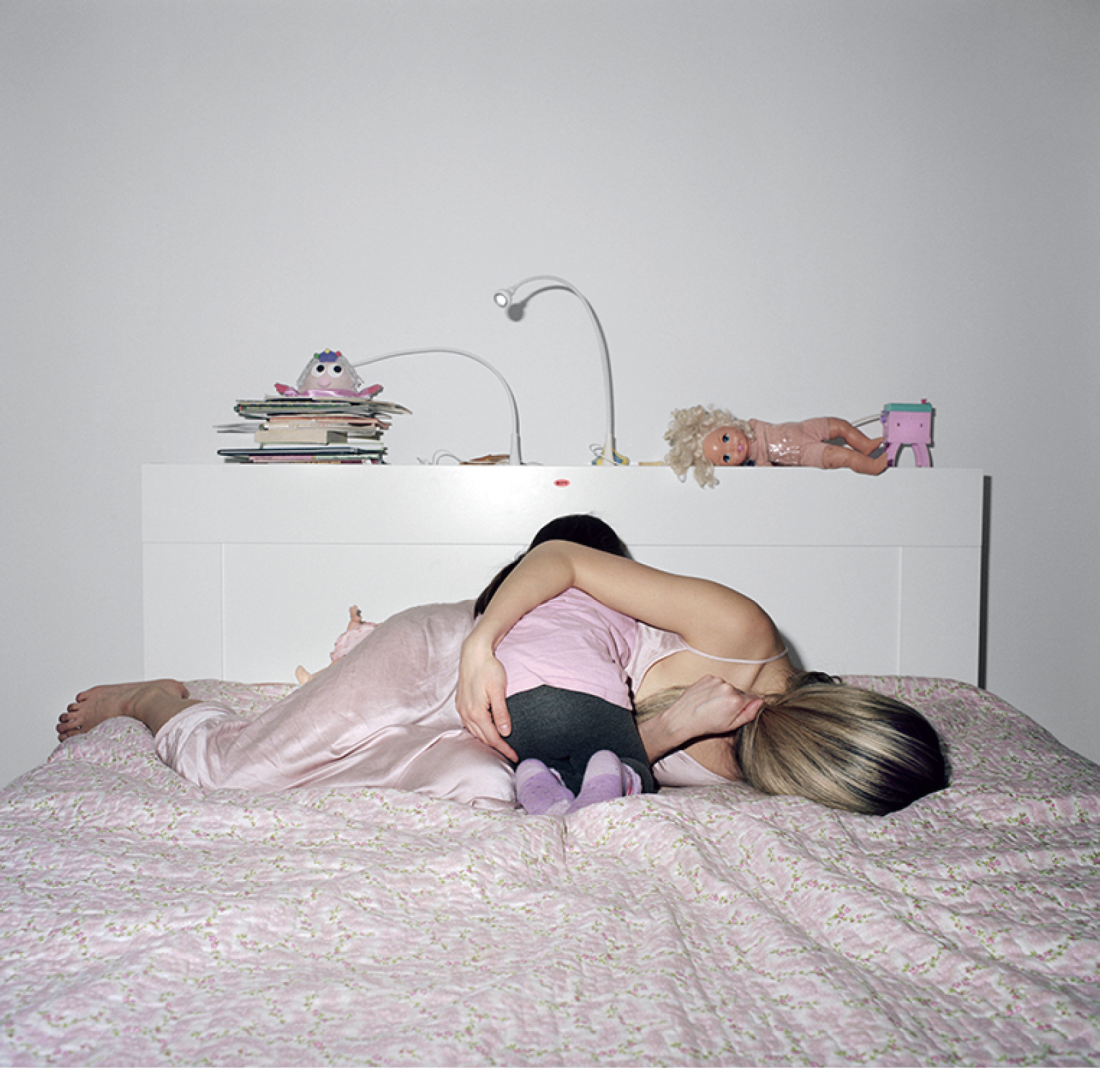Karen Asher
According to Karen Asher, the title of her exhibition, “The Full Catastrophe,” is inspired by Jon Kabat-Zinn’s self-help riff on a line from the 1964 film Zorba the Greek. The line alludes to the chaotic in the quotidian landscape; a habitation that careens through all manner of joys and miseries with a sense of acceptance, if not aplomb. How this translates to images is problematic. There is an uneasy relationship to the term catastrophe with regard to scale and scope within the visual vernacular of disaster. However, in a society where the dissemination of narcoleptic pet videos may have greater currency than natural and man-made disasters, Asher’s title bears reflection. The capacity to connect with individual moments that resonate can be compromised when we are overwhelmed with tragedy. A reconnection may surprise us in its banality, elevating its effect.

Karen Asher, Bra Strap, 2015, C-Print, 25 x 25 inches. All images courtesy the artist and AceArt, Winnipeg.
This theme plays through the vignette-like installation of the 27 photographs grouped by formal relationships and/or tonal qualities. Asher attests to her active role in the resulting image; a casting director of sorts working with actors (friends, more often than not) and improvised scripts. This cinematic quality is evident in the photograph, pointing to her array of images as stills; a quality that more often than not imbues her subjects with drama rather than resulting in a dramatic image.
Peach Pit, 2015, encapsulates this vision. The photograph accompanies the title wall text of the exhibition: a welcome of exuberant flailing. A young woman in underwear and pantyhose beams as she slips backward off a bed populated by several other revellers. Comparisons with the work of Juergen Teller are understandable with some similarities in lighting and a sense of the surreal. Yet, while Teller’s subjects may be glamorous celebrities or models debased in non-descript or lackluster settings, Asher’s subjects are in turn elevated or at home in their surroundings. All but three photographs take place in interiors with her framing and composition lending itself to the scanning of backgrounds for clues to her subjects or their situations. However minimal or cluttered, Asher’s eye for the mise en scène prompts a closer look.

Chairs, 2015, C-Print, 25 x 25 inches.
Another device that privileges the interior over interiority in her portraits is the masking of identity throughout most of the photographs in the exhibition. This is a marked departure from Asher’s earlier work that leaned heavily on the charisma of the sitter, a productive shift from character to plot. Manifested in multiple ways from actual masks in the aptly titled Masks, 2015, to the use of hair in Ripe, 2016, her subjects frustrate a culture accustomed to facial recognition software and online profiles clogged with poorly filtered selfies clamoring for identity tags. Blue Boy, 2014, is the deceptive exception to this masking with the subject addressing the camera directly. He is positioned as Buddha, the pale blue wall behind him displaying both a crucifix and a decorative plate of Ganesha, a myriad of markers that signal a complex belief system or perhaps just a covering of spiritual bases.
Further complicating a clear relationship to the subjects of her photographs, Asher’s titles also shift from one-word identifiers such as Wolfman, 2014, and Queen, 2015, to their backgrounds as in Wallpaper, 2016, and Painting, 2014. The latter two are a heavy-handed pairing on one wall that undermine the tension of a candid versus constructed moment so successfully present in the rest of the exhibition. In Painting, an older couple lean in on a blue embroidered sateen pillow propped against an ornate wood headboard positioned below a non-descript painting of flowers, or perhaps a print of a painting. The dramatic textures heighten their seemingly impromptu slumber, delightfully transcending the banal. On the other hand, Wallpaper feels like a self-conscious coupling of two black-clad, embedded, faceless individuals atop a wooden table in front of a hideously cheerful slab of bouquet-laden wallpaper. The visual thread of floral assembly as backdrop between the two photographs is both formally and conceptually uneven, an unfortunate disservice to the work.

Ripe, 2016, C-Print, 25 x 25 inches.
One corner of the gallery offers a small symphony of touch with an arrangement consisting of Double Handed, Blackhole, Chairs and Bra Strap (all 2015). The proximity of bodies and how they connect or comfort is moving, while ultimately remaining ambiguous toward any tangible sense of intimacy. In her artist talk in conjunction with the exhibition, Asher described a turn to the architectural or sculptural in her compositions. This interest in the representation of bodies marks a new development for the artist. Heightened by Asher’s ongoing experience of illness that precipitated a shift in the relationship to her own body over the last several years, this aspect marks a departure from earlier work rather than a resolved thread in “The Full Catastrophe.” As the exhibition marks a re-emergence of Asher’s photographic work after a brief hiatus due to the aforementioned illness, it is exciting to see a new transition in her photographs rather than a safe return. ❚
“The Full Catastrophe” was exhibited at Aceart, Winnipeg, from April 15 to May 20, 2016.
Courtney R Thompson is an arts writer living in Winnipeg.

